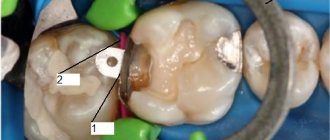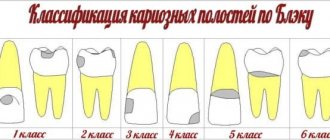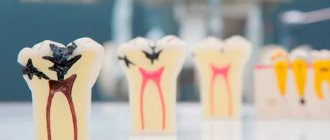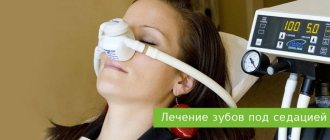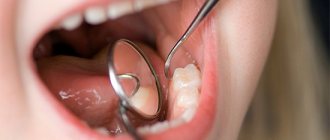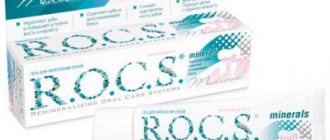5 rules of child therapy
- Two-stage anesthesia - first, the gum area is numbed with a gel or spray with lidocaine, and only then an injection is given. For children, the finest (carpule) needles are used.
- The safe concentration of anesthetic in injection is 2% lidocaine or 4% articaine, administered from 1/6 to 1/2 of the “adult” dose, depending on the weight of the baby. Anesthetics with adrenaline are contraindicated under 4 years of age.
- Removal of carious tissues using hand tools - excavators, curettes, scalers.
- The use of filling materials that are applied in one go and also contain fluorides and other beneficial minerals.
- The duration of the session is no more than 30 minutes, otherwise the child will get tired and begin to be capricious.
Methods for treating caries without drilling
Getting rid of caries without using a drill is the dream of every dental patient.
Not so long ago, it seemed absolutely unattainable. But technology is developing, new, more gentle, effective methods are constantly appearing. Today, treating caries without drilling is a completely common procedure. From a clinical point of view, caries is divided into 4 main stages of development. Gentle treatment methods, without the use of a drill, are used only in the initial stages of the disease, when the carious lesion has not penetrated deeper than the enamel. New technologies make it possible to stop the pathological process when a cavity has just begun to form in the fissure, without waiting for further destruction of dental tissue. Treatment of caries without a drill is carried out using the infiltration method, using ozone therapy, laser, and air abrasive effects.
Pros and cons of the Icon method
A couple of decades ago, it would have been impossible to imagine that new methods would appear in dentistry that would allow treatment without the use of a drill. Non-invasive methods of caries treatment are gaining popularity both throughout the world and in Russia. The demand for the Icon method is another confirmation of the fact that treatment without a drill is not only effective and pleasant for people, but also allows you to achieve the necessary results without further treatment.
However, as in any other area, there are those who have a rather detached attitude towards this technique, putting the existing small disadvantages at the forefront of their judgments. At the same time, some experts do not recommend the use of this technology even with slight damage to dentin.
Pros of using Icon:
- patient peace of mind, as there is no pain or discomfort;
- a solution for anyone suffering from dental fear;
- Only NuCalm technology can relieve fear better and more effectively - fast dental treatment with a guaranteed result;
- strengthening enamel and preserving tooth structure; for the treatment of initial caries, this is an effective and safe technique.
Cons of the Icon treatment:
- the technique is not suitable for medium and deep caries;
- secondary caries may occur (minimal risk, similar to conventional treatment methods);
- with absolutely the same condition of the teeth, treatment with traditional methods using a drill will be cheaper.
Often new forms and methods of treatment are perceived with caution and mistrust, and it takes more than a year for them to become firmly rooted in medical practice. But one cannot but agree that modern techniques allow one to avoid pain and discomfort from treatment with a drill. Icon technology deserves attention and trust.
Dental treatment without a drill, placing a filling without drilling in Moscow
Repeated endodontic treatment of tooth canals for pulp inflammation
Mistakes and complications in the treatment of dental pulpitis
Cervical caries on the front teeth: causes and treatment
Dental treatment during pregnancy 2nd trimester
Root canal treatment for chronic periodontitis
Treat or remove wisdom tooth pulpitis
ICON or liquid filling
The infiltration method of treatment (ICON) consists of using a special light-composite polymer, which fills the pores of the enamel, sealing the affected area. The treatment mechanism is quite simple:
- The carious lesion is covered with a special gel that splits the surface enamel layer (enamel etching).
- After removing the gel, the tooth surface is dried, and a polymer material is applied to fill the porous structure of the enamel, blocking the path for the spread of bacteria that cause caries.
- The infiltrate is polymerized using a special lamp.
The ICON treatment method does not require mechanical action on dental tissue. The procedure is painless, lasts 10-15 minutes, and is used to eliminate superficial caries. Excellent for patients who are contraindicated for anesthesia - allergy sufferers, children, pregnant women.
Treatment of dental caries using the Icon method
The undeniable advantage of this treatment method is its duration: without any contraindications, Icon dental treatment can be performed in one visit. Moreover, it will not require special preparation and will take no more than half an hour.
Stages of treatment using Infiltration Concept technology
- Professional oral hygiene using ultrasound and Air Flow method
- Limiting the working surface using interdental wedges to protect surrounding teeth.
- Apply Icon-etch etching gel to the affected area for a couple of minutes.
- Removing the gel by rinsing.
- Drying teeth with air pressure and Icon-Dry conditioner;
- Two-stage application of infiltrate.
- Ultraviolet exposure in two stages: the first time for 3 minutes, the second time for 1 minute.
Ozone treatment
The technique is based on the effect of ozone on the carious lesion. A special cap connected to ozone therapy equipment is put on the tooth. Exposure to ozone has a detrimental effect on pathogens. After disinfection, a special sealing agent is applied to the affected area. This method is used to treat caries in the spot stage, fissure, and molar surface caries. Ozone therapy is used for antiseptic treatment of carious cavities at any stage of the disease, as well as in the treatment of gingivitis, periodontitis and other periodontal pathologies.
Indications and contraindications for dental treatment with the Icon system
We have to admit that although the technique is a small miracle in the world of dentistry, since it allows you to treat teeth without a drill, it is not suitable in all cases.
Indications for treatment with Icon:
- fear of dental procedures (dentophobia), anesthesia;
- allergy to anesthesia drugs;
- violations of the integrity of tooth enamel after orthodontic treatment;
- caries that affects the enamel of both the upper and deep layers, as well as when the upper third of the dentin is injured. However, some dentists are skeptical about the treatment of caries with affected dentin with Icon;
- the presence of carious areas in the interdental space and other hard-to-reach places.
Contraindications to treatment:
- individual intolerance to the components of the drug;
- children under 3 years of age, due to the possibility of damaging very fragile children's enamel;
- the product will not help with enamel diseases;
- in case of deep damage to dentin.
Laser technologies
Dental tissue preparation is performed non-contactly using a laser. The doctor adjusts the length of the laser beam according to the clinical picture. The radiation affects only the affected tissue, healthy tissue is not involved. Another advantage of the method is the absence of the vibration effect that occurs when the drill is operating. And this eliminates the risk of cracks and chips in the enamel. Laser radiation has a bactericidal effect; after treatment, the carious cavity is absolutely sterile; after filling, the development of secondary caries is excluded.
Treatment without a drill, using laser technologies, can be used both in the initial stages of caries and in cases of noticeable damage to the tooth, when it is necessary to place a filling. The procedure is painless, harmless, and is indicated for patients with special sensitivity, including children and pregnant women.
Diagnosis of caries
Caries in children develops faster and more aggressively than in adults.
This is due to the fact that the enamel of baby teeth is weak and riddled with micropores, where bacteria easily penetrate. Once the carious process begins, the tooth is destroyed in just a few months. This is why it is so important to visit a pediatric dentist every 3-4 months. Symptoms of caries at different stages:
- Initial caries
First, white (chalky) spots appear on the enamel. Then they acquire a yellowish tint, and the surface of the tooth becomes rough. The baby does not feel pain yet, but a reaction to hot and cold food is possible. Initial caries is treated without drilling with a drill. This is the only stage at which it is still possible to restore the enamel and do without a filling. - Medium caries
The enamel layer is destroyed and a carious “hole” is formed. Sharp pain appears when exposed to mechanical or chemical stimuli. Softened dentin and food debris accumulate at the bottom of the cavity. Gentle methods and prevention will no longer help - you need to put a filling. The dental cavity is open and needs to be sealed hermetically with a filling material. - Deep caries
The carious “hole” increases and becomes very noticeable. The enamel and a significant part of the dentin (bone dental tissue) are affected. When probing the bottom of the cavity, a large amount of softened dead tissue is discovered. Deep caries in children is treated with filling. But sometimes the enamel is so destroyed that there is no point in putting a filling; the baby tooth has to be removed.
Visual examination and probing are enough to determine the stage of caries in a child. But sometimes the carious lesion is located in a place that is difficult to access. In this case, an x-ray is prescribed or an intraoral camera is used.
If it is difficult to recognize initial caries, the doctor uses a caries detector. This is a liquid that turns infected tissue blue or pink. Don't worry, the drug is safe for your child's health.
Prevention of caries
Regular oral hygiene will help maintain dental health. You need to brush your teeth twice a day, using fluoride toothpastes and mouth rinses. Don't forget to use dental floss and irrigator. You can prevent tooth decay by limiting your carbohydrate intake. Sweets, baked goods, and carbonated drinks leave sticky residues that serve as a breeding ground for oral microflora. Bacterial plaque forms faster, which increases the risk of developing caries.
An important condition for caries prevention is visiting the dentist at least 2 times a year for examination and hygienic cleaning. Regular inspections allow you to detect problems at an early stage. In this case, it is possible to treat caries without drilling, using non-invasive technology.
Diagnostics
In our clinic, caries diagnosis begins with an examination. The dentist carefully examines each tooth from the outside and inside, lightly tapping it (percussion). If a source of infection is detected, thermometry is performed - exposing the tooth to cold to assess the reaction. Electroodontometry helps determine the degree of infection development - the impact of a microcurrent on the tooth, to which the inflamed pulp will react. Patients are prescribed x-rays to assess the condition of the root tissues and detect hidden cavities.
Treatment with the ICON method: main advantages
Therapy of dental caries using the Icon infiltration method has many advantages:
- After the procedure, the natural anatomical shape of the tooth is preserved, and the enamel surface does not change color, as is the case with a filling.
- Treatment of caries with this method is absolutely painless, so it does not require anesthesia.
- Dentists say that ICON is suitable even for children over three years of age; baby teeth can be treated with this method.
- The procedure is quick: it lasts only 15-20 minutes.
- ICON caries treatment preserves healthy tooth tissue, whereas in the case of preparation, sometimes it is necessary to remove part of the healthy ones along with the affected areas.
- The technology allows you to achieve high aesthetic results and maintain a beautiful, natural smile.
- You can treat several teeth affected by caries at once.
- After the procedure, damaged enamel becomes strong and resistant to external influences.
Stages of traditional caries treatment (using a drill)
- Anesthesia completely removes pain. At DHC, local anesthesia is performed with new generation drugs based on Articaine. The injections are completely safe, hypoallergenic, and have no restrictions or side effects.
- Tooth preparation - excision of carious tissues with a drill. It is necessary to remove all affected tissue, otherwise the infection will recur.
- Creation of a cavity with burs of different sizes with cooling so as not to overheat the pulp and dentin. Inside, the cavity is treated with etching gel to improve adhesion to the filling.
- Installation of a gasket - made on the basis of calcium hydroxide, normalizes blood circulation in the pulp, accelerates dentin regeneration. Spacers are needed when the cavity wall is located next to the pulp.
- Filling with photopolymer materials. Such fillings are durable, similar in color to enamel, and can withstand any load.
- Grinding - adjusting the filling height so that it does not interfere with the closure of the teeth and does not disturb the bite.
The importance of timely treatment
Erroneous conclusions that treatment of primary teeth in children is a waste of time and stress for the child often leads to damage to the oral cavity by a variety of dental diseases. It is important for parents to understand:
- temporary teeth have roots, when they are damaged, the infection enters the rudiments of permanent units, and they grow unhealthy;
- early loss of baby teeth prevents the proper eruption of permanent teeth, which can lead to serious expenses for orthodontic services in the future;
- a diseased tooth leads to inflammation of the periodontium, which becomes a source of infection and the cause of the total spread of caries after the eruption of permanent teeth.
If baby teeth are not treated, an adult child will inevitably have problems with bite, bad breath, caries, and periodontitis. Therefore, do not neglect visits to the pediatric dentist.
Dental treatment without drilling using folk remedies
Of course, you cannot cure caries at home. The only thing in your power is to follow measures to prevent its occurrence. In addition to simple and understandable actions for every person to maintain the health and integrity of teeth (brushing the tongue and teeth twice a day after meals and visiting the dentist once every six months), there are additional measures. These include, for example, the application of special gels that strengthen tooth enamel and saturate it with missing minerals. This helps prevent caries and its complications, but does not eliminate them. Another interesting way to treat caries at home is milk powder, used as a toothpaste substitute. Brushing with this milk powder reduces bleeding gums and reduces the risk of tartar.
Folk remedies for caries are intended to generally relieve toothache, but not eliminate its cause. To relieve pain, various alcoholic infusions of medicinal herbs are used, lotions are made and applied directly to the diseased tooth; It is also recommended to rinse your mouth with an infusion of strong tea. There is a point on the body, pressing firmly on which temporarily relieves toothache. The point is located in the area between the nose and lips. Don’t overdo it; you will still have to contact a specialist for real help in eliminating the cause of toothache. Make sure that your toothpaste contains microelements such as fluoride and calcium, and that your diet contains fewer carbohydrates and more greens, lean meats and dairy products.
Nowadays, there is a lot of debate about how to cure tooth decay without pain and fear. Technologies that can solve dental problems without the use of a drill are just beginning to appear on the Russian market. In any case, even such modern methods of caries treatment are applicable mainly in the early stages of its occurrence. If you are not eager to experience the effects of drilling with a bur, do not neglect the health of your teeth and seek help from specialists in a timely manner.
Complications after treatment
If the dentist overheats the dentin or injures the pulp during preparation, the tooth will begin to ache after the anesthesia wears off. We'll have to re-open it and depulp it. A lump may appear on the gum after unsuccessful canal sealing if the material penetrates beyond the root. Then you need to re-open the canal, treat the inflammation, then fill it again.
If the filling is in the way, it means that the dentist did not sharpen or polish it properly. This can be easily fixed. The appearance of a reaction to thermal changes indicates a violation of the tightness of the seal. All these complications often arise due to the fault of the dentist. To prevent them, you should carefully choose a clinic and trust only doctors with extensive experience.
What is microinvasive caries treatment and when is it used?
The stain stage, when the tooth enamel has already begun to lose minerals, but there is no carious cavity in it yet, is considered the most favorable in terms of the effectiveness of treatment. At this stage, the carious process is reversible, and with timely treatment, it can be stopped and the enamel restored to its previous strength. At the same time, to treat a carious stain, you do not need to prepare the tooth; caries at this stage can be easily treated using microinvasive methods. One of them is ICON technology - infiltration treatment. This technology was invented in Germany and has been certified and successfully tested in many European countries. Today it is widely used by Russian dentists to treat the early stages of caries in children and adults.
Dentistry without a drill: basic techniques
Dentists use the following techniques:
- Treatment of caries with ozone.
Oxygen converted into ozone neutralizes the source of infection and harmful bacteria. Ozone therapy in dentistry is used as one of the stages of carious cavity treatment, as well as for the treatment of gums. - Laser treatment
is a selective effect of laser fluorescence on the carious surface of the tooth. The effectiveness of this method is selective. - Air abrasive method
using a RONDOflex tip. This method is effective for expanding and opening fissures, removing residual medications (cement) from the surface of crowns, bridges and braces. Used to clean tooth enamel from stains. The handpiece provides precise, highly effective and easy treatment with maximum preservation of healthy areas. Belgravia Dental Studio doctors use the RONDOflex handpiece in their work, but it cannot fully replace a drill in the treatment of caries.
Conclusion: all of the above methods cannot be considered truly effective ways to treat caries without a drill. They can be used by dentists only to solve a narrow range of problems.

